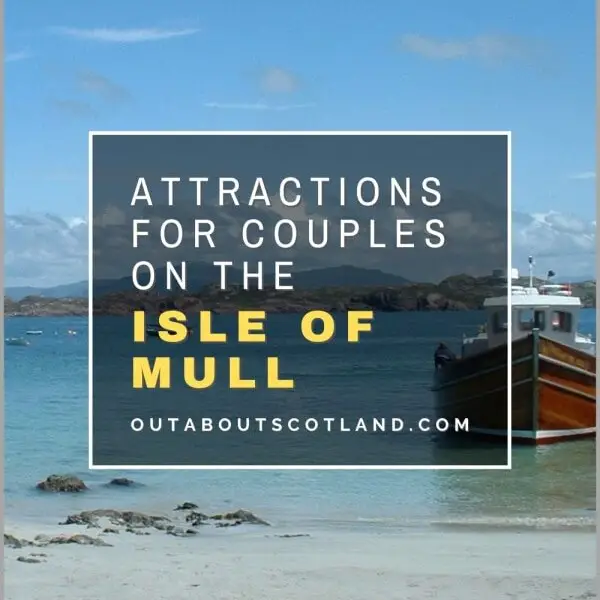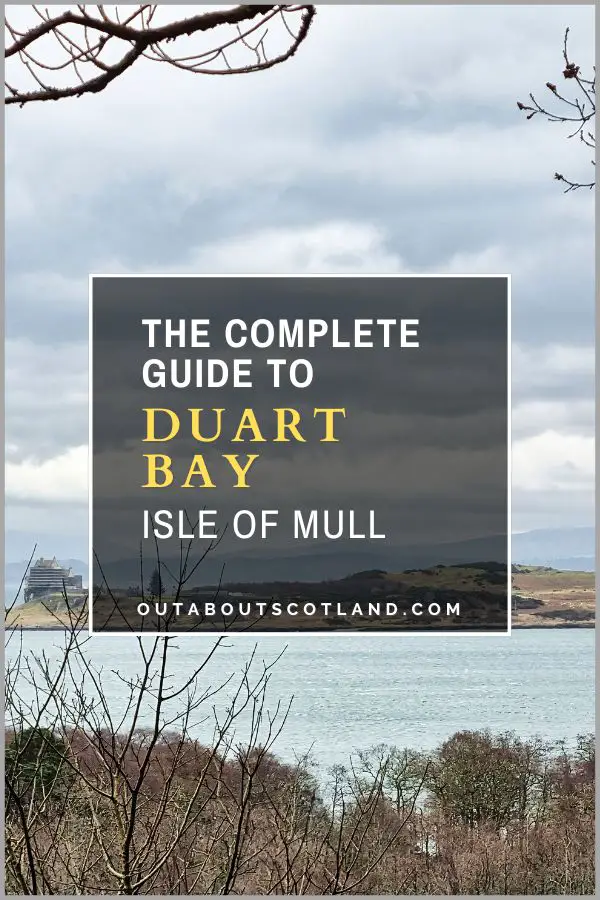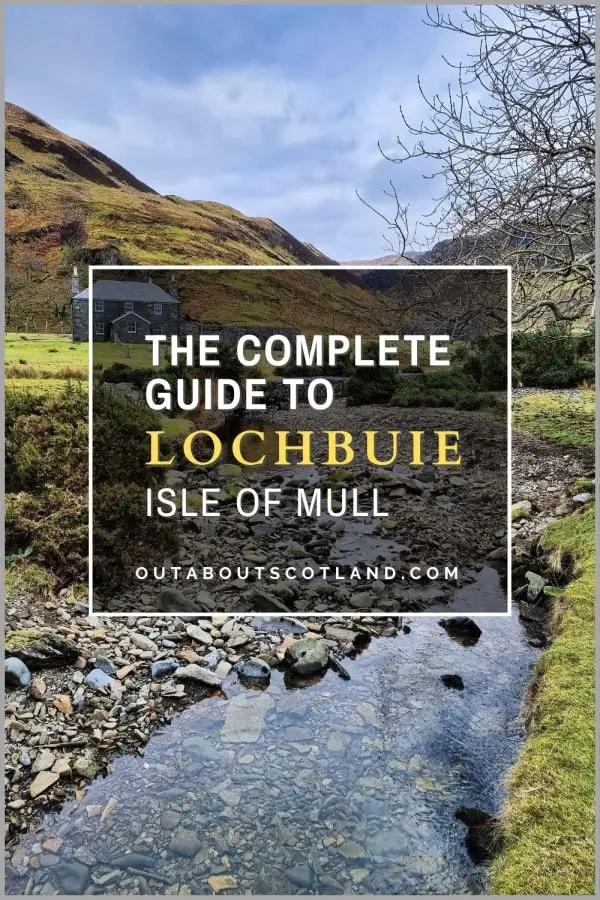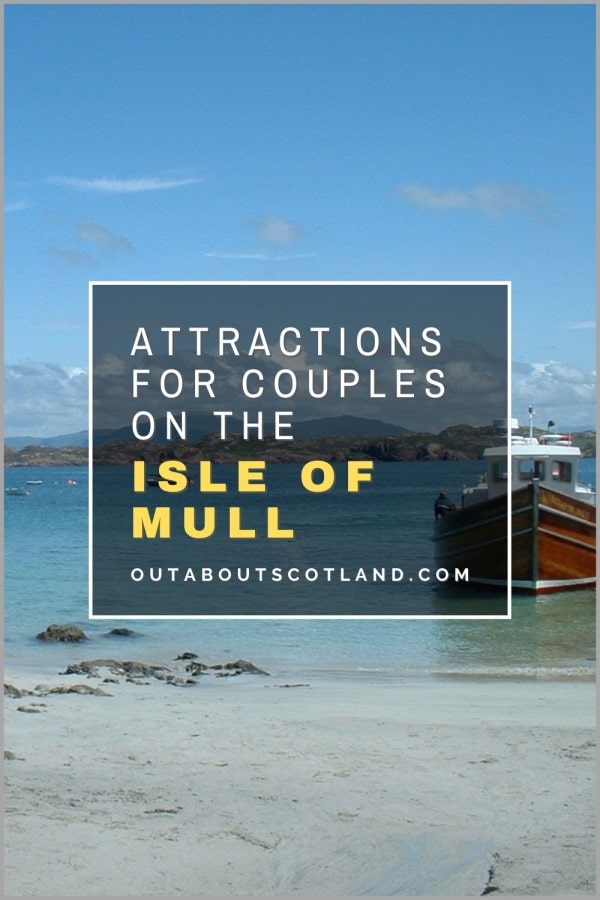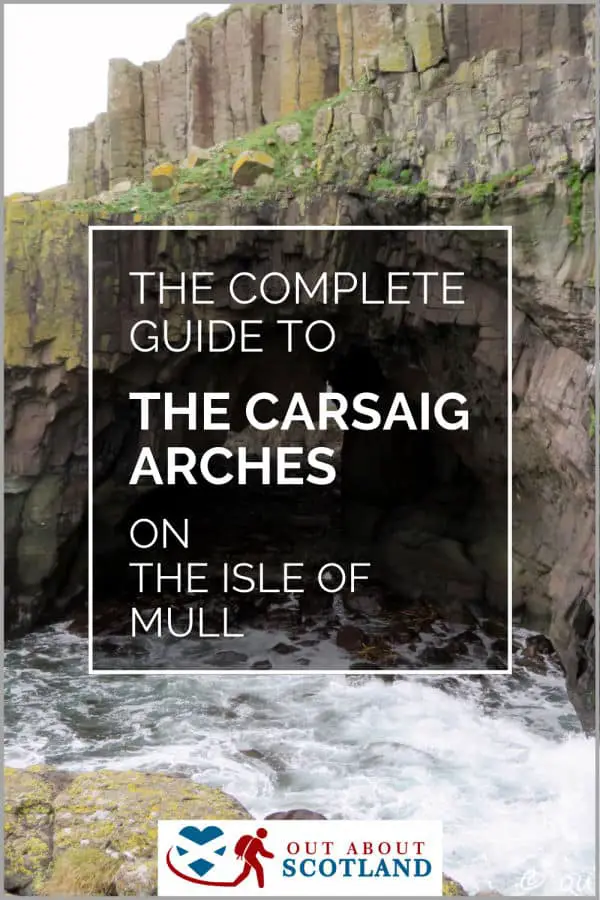The second-largest island in the Inner Hebrides, the Isle of Mull – is one of Scotland’s most popular tourist destinations thanks to its wide range of attractions which include dramatic mountains, lush forests, historic buildings, golden beaches, and stunning coastlines. Discover the best things for couples to do on the Isle of Mull with this guide which features a selection of top attractions along with useful visiting tips.
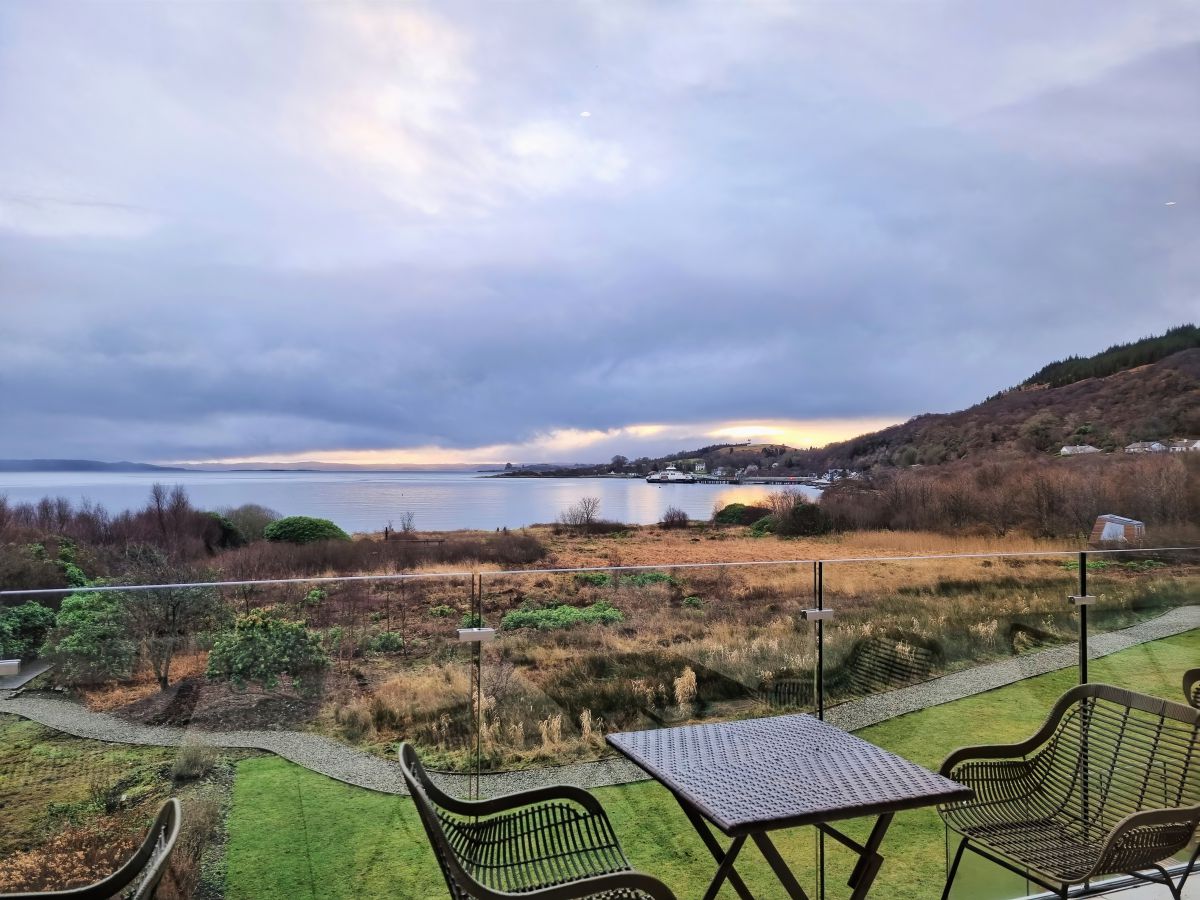
Things to Do on the Isle of Mull for Couples
The Isle of Mull is a favourite with many visitors to Scotland for a number of reasons. First, it’s a big island (the fourth-largest island in the UK, in fact), so there are lots of places to visit. Second, it has a truly stunning landscape that encompasses monumental mountain ranges, dense forests, and one of the most dramatic coastlines in Britain.
And third, there are almost as many attractions on Mull as there are on Skye, but it has fewer tourists – something you’ll only appreciate if you’ve ever visited Skye in the peak season. Personally, I love Mull, and I have to rate it as one of the best islands on the west coast for holidaymakers.
If you’re a wildlife enthusiast, you’ll instantly fall in love with the north of the island where Britain’s largest bird, the white-tailed sea eagle, can be seen soaring overhead, and if you’re an avid Munro-bagger, you’ll have a wonderful time climbing to the summit of Ben More.
Anyone with an interest in history will be fascinated by nearby Iona and its 13th-century abbey, and all ages will enjoy exploring the pretty fishing villages dotted around the island,especially Tobermory with its iconic pastel-coloured buildings that line the harbour.
There are also roads that beg to be explored by bike, a castle with one of the best views in Scotland, and a number of immaculate beaches that are so off-the-grid you’ll probably find you’re the only person there.
Fitting every attraction into one article wouldn’t be practical, so I’ve picked a few of my favourites, which will give you a good idea of what to expect. Each one has a brief overview, but if you’d like to know more, there are links to separate pages where I cover each site in greater detail.

Tours of Mull for Couples
The Isle of Mull is a must-visit destination for tourists. There are dramatic mountains to climb, beautiful coastlines to walk around, historic buildings to visit, and incredible wildlife-watching opportunities around every corner.
While it’s certainly possible to head off in any direction and hope for the best, it makes more sense to leave the driving to a professional tour guide who can take you to all the main attractions as well as the hidden gems that only the locals know about.
Although there are dozens of tour operators ready to take visitors around Mull, the pick of the bunch has to be Rabbie’s. This company specialises in small group tours using mini coaches that seat no more than 16 people, so occupants get to make new friends as they explore each new destination while never feeling like they’re lost in the middle of a big crowd.
I’ve used Rabbie’s several times in the past and have nothing but good things to say about them. The drivers are extremely knowledgeable, the places they take you to are always interesting, and the prices are very reasonable.
If you’re thinking of touring the Isle of Mull and would like to know more about Rabbie’s, I highly recommend taking a look at their website which shows all the tours they run in Scotland as well as the rest of Britain.
Rabbie’s Mull & Iona 3-day Tour
Itinerary day 1:
- From Glasgow, head to Loch Lomond and stop at the village of Luss.
- Continue through Glencoe and stop for lunch in a traditional pub.
- Travel to the port of Lochaline and take the ferry to the Isle of Mull.
- Visit Aros Park before heading to Tobermory.
Itinerary day 2:
- Depart Tobermory and head to the south of the island.
- Take the short ferry to the Isle of Iona.
- Explore Iona and Iona Abbey.
- Take a boat trip to the Island of Staffa and Fingals Cave.
- Return to Tobermory.
Itinerary day 3:
- Depart Tobermory and travel to Craignure for the ferry to the mainland.
- Stop in Oban to explore the town and have lunch.
- Head to Kilmartin Glen and stop to explore the site.
- Continue to Inverary and Loch Fyne to explore the area.
- Return to Glasgow.
Book a 3-day tour of Mull and Iona with Rabbie’s
Map of Attractions on the Isle of Mull for Couples
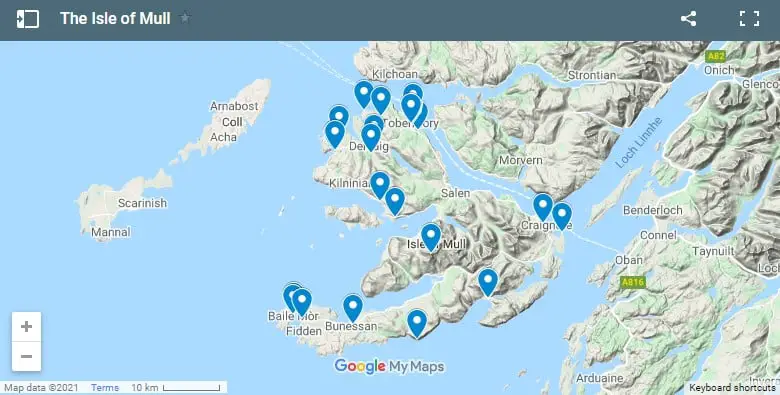
Ben More

Out About Scotland Complete Guide to Ben More
Ben More is the highest mountain on Mull at 3,169 feet (966 metres), which puts it firmly in Munro territory. It’s situated on the southwest of the island between Loch Na Keal and Loch Scridain, and access is possible from either the north or the south thanks to the B8035 that circles it.
If I were to offer any advice, it would be to tackle Ben More from the village of Dhiseig on the shores of Loch Na Keal and follow the moderate but long incline heading south to the summit. The alternative route from the shore of Loch Scridain is far more challenging, starting off on a shallow incline before turning into a tough slog through boggy moorland and steep scree slopes.
The reward you’ll get from the summit at the end of the 4-hour hike is well worth it, and the mountainous landscape in this part of Mull has to be one of the most majestic in Scotland. There’s a lot of wildlife to see along the way too, so keep your eyes open for red deer foraging at the edges of the woodlands and sea eagles gliding above the lochs.
If you’d like to know more about Munro-bagging, check out this post: A Guide To Munros in Scotland.
Iona Abbey
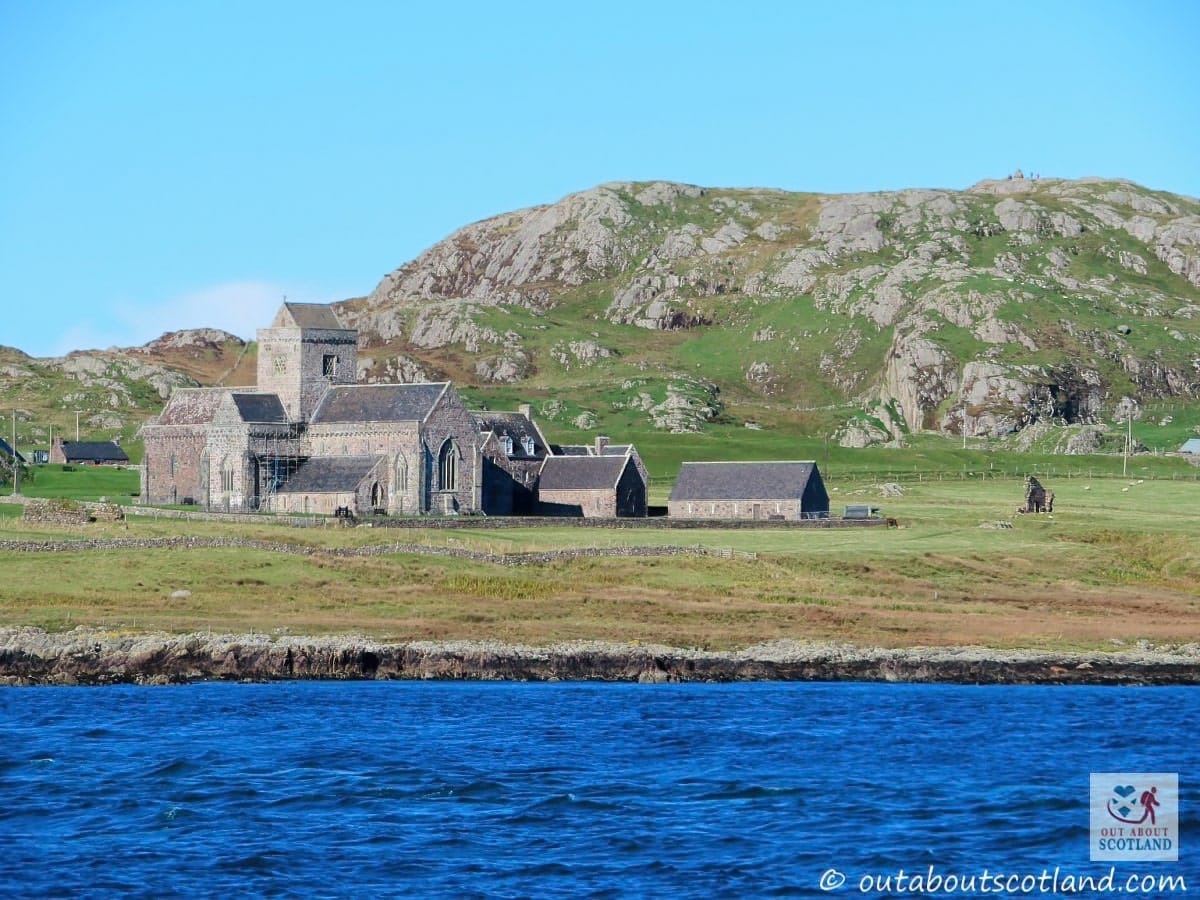
Out About Scotland Complete Guide to Iona Abbey
Iona Abbey isn’t actually situated on Mull, and is instead (unsurprisingly), found on the Isle of Iona which lies just off Mull’s far southwest corner. Getting there is a bit of a trek, as access to the ferry terminal at Fionnphort is only possible via the A849, which is a single-track road that winds its way across the island’s wild and virtually uninhabited southern region.
If you decide to base yourself in Tobermory you’re looking at a two-hour drive, but to be honest, the landscape is so nice that it’s as much of an attraction as the abbey itself. The sail from Fionnphort is very short – maybe five to ten minutes – after which you’ll find yourself in a small fishing village just a few minute’s walk from the abbey.
Before arriving at the abbey you’ll pass a ruined nunnery, but the main attraction is located at the far end of a narrow lane heading north.
Historic Environment Scotland, which is responsible for maintaining Iona Abbey, has thoughtfully positioned information panels around the buildings so that you can read about the history of one of Scotland’s most significant religious sites as well as St. Columba, who founded it.
Quinish Point

Out About Scotland Complete Guide to Quinish Point
The northern end of Mull is even more wild and remote than the south, and visitors are spoilt for choice when it comes to finding places to go for a walk. One of the highlights of this part of Mull is Quinish Point, a windswept headland that’s ringed by a near-inaccessible boulder-strewn coastline.
The walk to Quinish Point starts in the small village of Dervaig, where you’ll join a rough track that passes through open moorland and sweeping fields in between a smattering of ancient woodlands where the salty tang of the sea hangs in the air.
It really is a lovely part of the island, and if you were to go for only one walk on Mull, I’d say this is the pick of the bunch. Because the sea surrounds the headland, you’ll get great views of Mull’s wildlife, so I highly recommend you pack a pair of binoculars in your bag, as Quinish Point is a favourite nesting site for golden and white-tailed eagles.
There are also herds of red deer (Britain’s largest land mammals), fallow deer, otters, polecats, and mink, though the latter is rarely seen. When you reach the coastline of Quinish Point, you’ll more than likely see seals lazing on the pebble beaches, and you might, if you’re lucky, catch sight of basking sharks in the stretch of water between Mull and the Isle of Coll.
One tip I have for you if you set off on this walk is to look for the standing stones located in a field halfway along the route. These nine-foot monoliths are some of the oldest in Scotland, though why they’ve been placed there is a mystery.
Carsaig Arches
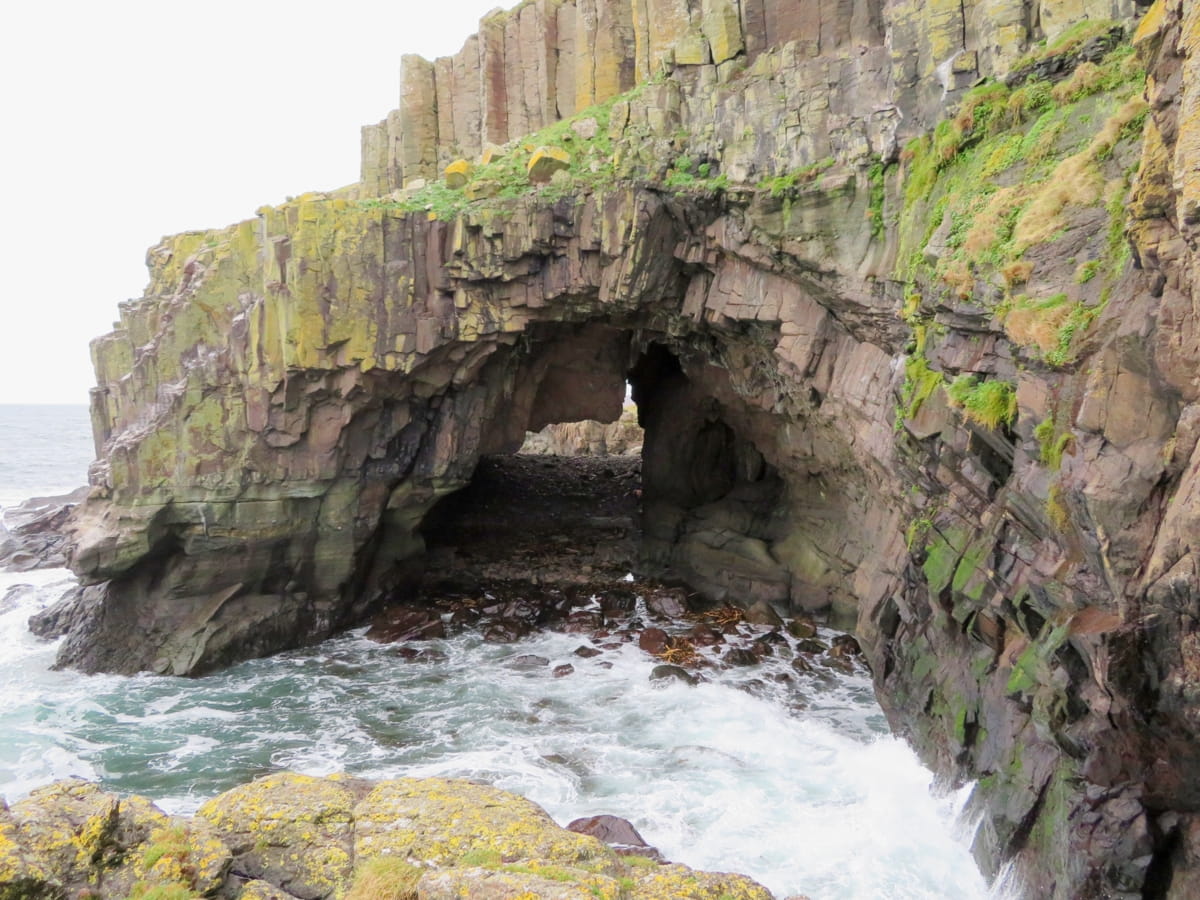
Out About Scotland Complete Guide to the Carsaig Arches
When I completed this walk from Carsaig Pier to the Carsaig Arches, it was one of the worst hikes I’ve ever done. But it was also one of the best. When I say ‘worst’, I mean that only in the sense that it was so difficult.
On that occasion, I’d arrived on Mull in the middle of a very stormy week when the waves were crashing against the island, bringing with them colossal boulders that were unceremoniously dropped on the path running along the bottom of the cliffs, turning the walk into an incredibly laborious scramble.
Whether those boulders have now been cleared, I don’t know, but if they have, you’re going to love the scenery from start to finish.
The eight-mile return trip to the arches from Carsaig Pier takes about six hours, but once you get going, you’ll have spectacular views south to the Isle of Jura, and you might be lucky (as I was) to have curious seals accompany you as you follow the water’s edge.
The south of Mull is a favourite spot for red deer, guillemots, and black shags, but the big surprise is the herds of wild goats that roam around the rocky coastline. The shingle beaches are a good place to stop for a wee break as there are so many boulders to perch on, and I guarantee that at some point you’ll find yourself sharing the beach with a goat or two.
The arches themselves are quite impressive with the waves thundering into them, but I would not recommend trying to climb down to see them close up as the narrow track is precarious and downright dangerous if it’s wet and slippery. However, if you’re happy with standing on the cliff edge and viewing the arches from a distance, you’ll have an experience you won’t forget for quite some time.
Mull Cycle Routes
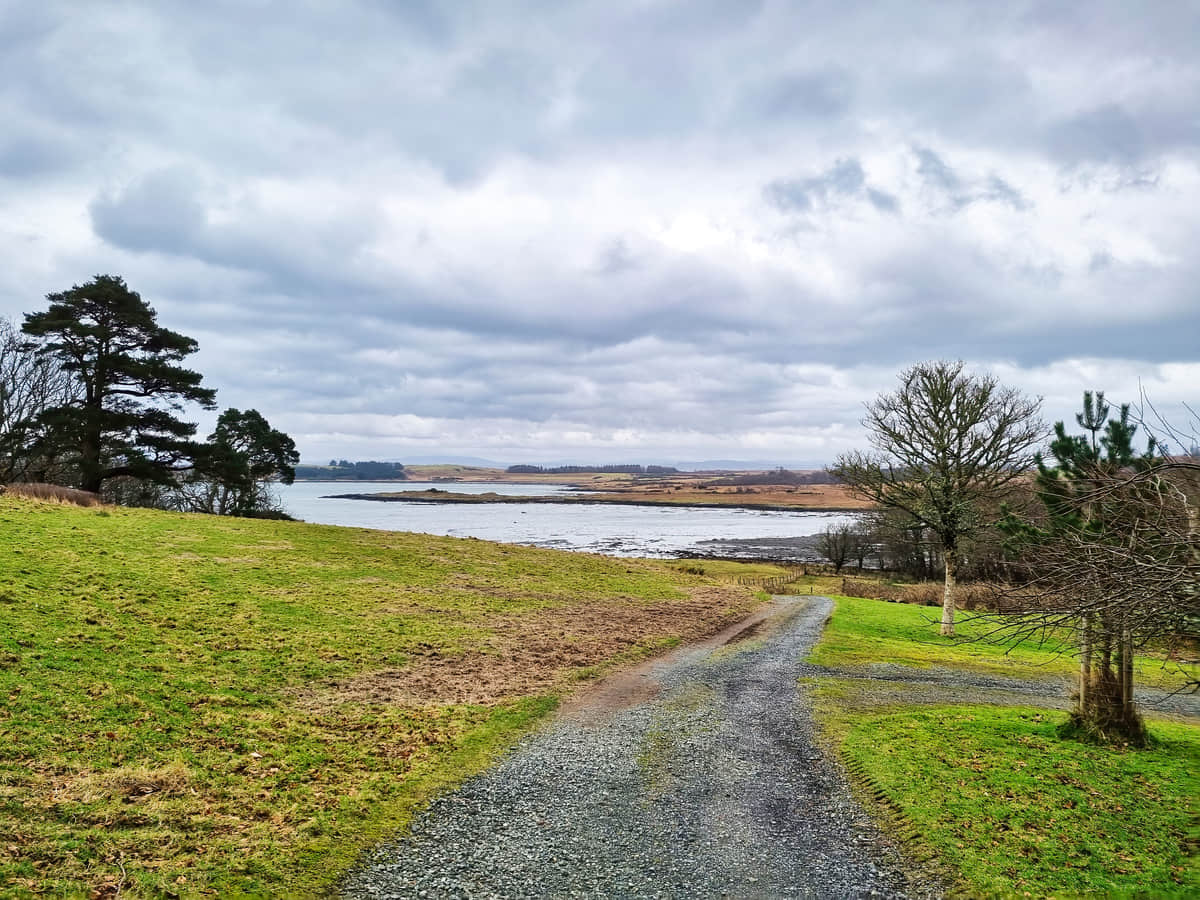
Out About Scotland Complete Guide to the Isle of Mull
I’ve already mentioned that Mull is a large island, but what I haven’t said is that its combination of gorgeous scenery and well-managed roads makes it a superb place to go on a cycling holiday.
Admittedly, most of Mull’s roads are single-lane, so you’ll need to stay alert for cars coming ahead and behind, but there are lots of passing places on either side the roads, and in most places, the verge is low and wide so it’s easy to swing off the tarmac and trundle along the grass if a rogue camper van suddenly comes hurtling towards you.
Mull is a moderately hilly island, so if you’re unfit, you might consider giving it a miss and going for a cycle around a flat island like Tiree instead, but if you’re reasonably fit, you shouldn’t have too much trouble getting around.
Highlights have to be the A849 heading west from Loch Beg Bridge to Fionnphort and the coastal road on the B8073 heading north to Calgary Bay, but to be honest, all of Mull’s roads offer a different and equally enjoyable experience if you’re on two wheels.
The only downside is the fact that because the villages are spaced so far apart and the island is so big, you’ll struggle to find places to hide away from the elements if the weather closes in, but on the upside, there are untold numbers of spots to set up a tent if you’re on a cycling or camping trip.
More Attractions on Mull
| Iona Abbey | Aros Park | The Old Byre Heritage Centre |
| Iona Nunnery | Mull Aquarium | Langamull Beach |
| Ross of Mull Historic Centre | The Mull Museum | Duart Bay |
| Carsaig Arches | Quinish Point | Calgary Bay |
| Lochbuie Standing Stones | Dun Ara Castle | Eas Fors Waterfall |
| Ben More | Ardmore Forest | Craignure |
| Duart Castle | Kilmore Standing Stones | Tobermory Distillery |
Frequently Asked Questions
Where is the Isle of Mull?
The Isle of Mull is located on the west coast of Scotland, west of Oban and south of Loch Linnhe. It is the second-largest island in the Inner Hebrides and is part of the Argyll and Bute council area.
At 338 square miles, Mull is the fourth-largest island in Britain after Shetland, Skye, and Lewis and Harris. Getting to Mull is easy thanks to regular ferries that sail direct from Oban on a journey that takes just 45 minutes.
What is Mull famous for?
Mull is best known for its wildlife, which includes white-tailed sea eagles, golden eagles, red deer, otters, Atlantic and common seals, and more than twenty different species of whales, dolphins, and porpoises.
The island is also known as a tourist destination thanks to its stunning landscape, which includes visitor favourites such as Ben More, Calgary Bay, and Quinish Point.
How do you get around Mull?
Ferries from Oban run seven days a week so it’s easy to take a car across to Mull. Once on the island, there are single-track roads that circle from north to south.
Plan at least two hours to drive around the perimeter of the island and much more if you take photo stops (which you will).
Why go to the Isle of Mull?
1. Duart Castle: An 800-year-old castle perched on a rocky outcrop on a very scenic peninsula. The castle is the historic home of one of Scotland’s oldest clans, the Macleans.
2. Wildlife: The island is one of the top destinations in Britain for wildlife watchers and Isle of Mull boat trips are famous for sightings of minke whales which number just 300 in the entire UK.
3. Tobermory: This is a pretty harbour village that gained fame as the setting for the children’s TV show Balamory, but it’s also home to Tobermory Distillery, the Mull Aquarium and the Mull Museum.
4. Tours: Mull is an ideal location for setting off on a sea tour, with the most popular being Fingal’s Cave on the nearby Isle of Staffa.

